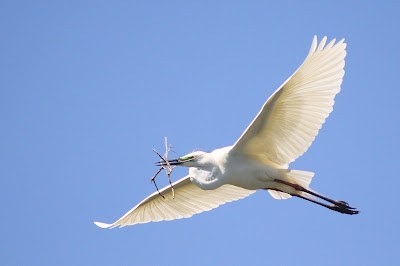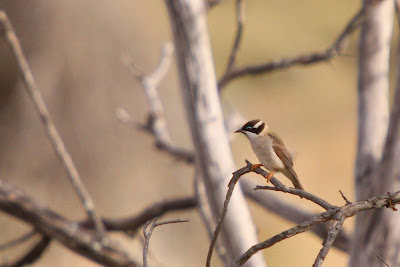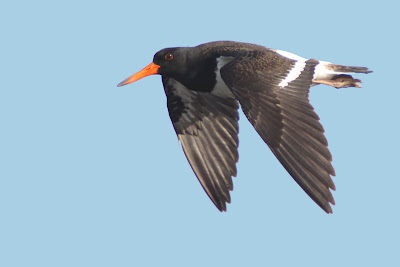Tuesday, December 29, 2009
Collaborative bird observation
It is set up as a game, with 902 registered players. There are competitions as to who has the most correct IDs, the best photos , the most species photographed etc.
The Networked Bird Observatory Blog has details on how to participate plus records of the birds captured by visitors. As well as rare birds for the area, such as the scissor-tailed flycatcher and the black-bellied whistling duck, site visitors have recorded an aligator, a bobcat, and a couple of snakes.
Monday, December 21, 2009
Dubbo



Our very hot day in Dubbo was followed by an evening storm, followed by steady rain. I headed out along the Newell Highway south hoping that the weather would clear. There is open TSR all along this highway which features many reputedly great birding spots.
I turned in at Rifle Range Road, and walked the track that ran parallel with the highway. Black Cypress and Casuarina were spangled with rain drops. Along the path was evidence of birds, probably Glossy Black Cockatoos, having fed on the seed pods. An Eastern Yellow Robin followed me along the path. Honeyeaters browsed high in the trees, but it was too dark to identify them. Brown-headed Honeyeaters have been seen here recently.
Sunday, December 20, 2009
Western Plains
Western Plains Zoo has been actively involved in the Malleefowl recovery program since 1990, when it assisted with incubation and rearing of eggs from wild Malleefowl mounds, to produce chicks for release. After this initial release, some birds were kept to form the first captive breeding pairs, which would in turn produce chicks for future releases. Chicks hatched and reared at Western Plains are released regularly with over 500 chicks released to date. Many of the birds have been released at Yathong Nature Reserve, a huge 107,241 hectare reserve south of Cobar which features extensive areas of mallee.
When the chicks hatch they dig their way out of the mound, a process that can take 10 to 12 hours. They are on their own from the moment they hatch, fending for themselves. The parent birds are not involved in caring for their young, and as the chicks hatch one at a time, they have no contact with their siblings either.
Friday, December 18, 2009
Dubbo

In Dubbo for a couple of days birding the travelling stock routes of the central west, I arrived to 43 degree heat and strong winds. It was even hotter in my room so I switched the air con to max, and left for a walk while it did its thing.
From the Visitors Centre in Bligh Street, I walked across the Emile Serisier Bridge over the Macquarie River and along the river path under the River Red Gums. The path runs all the way to the zoo, but I crossed back over on one of several footbridges. There were several large groups of red-rumped parrots feeding in the grass, and one baby being fed in the high branches of a tree.
Bird List:
Red-Rumped Parrot
Eastern Rosella
Sulphur-crested Cockatoo
Little Corella
Galah
Australian Raven
Willie Wagtail
Magpie Lark
Australian Magpie
Eastern Yellow Robin
Maned Duck
Little Black Cormorant
Superb Fairywren
White-browed Scrub Wren
Wednesday, December 16, 2009
Kitchener

I came across this perfectly posed mistletoe bird in a patch of dense wattle scrub. I was walking with the Sigma 50-500 lens, with settings for the bright sunlight that we had been in moments before. I took several shots on the 'custom' position that I had set up for birding but this was giving me underexposed images. My flash unit was back in the car, and it was a bit much to hope that he'd wait long in this position. So I just flicked the dial to full automatic, allowing the on-camera flash to pop up. This was slow-speed flash and there was sufficient ambient light to give a blurred outline to the moving bird.
Sunday, December 13, 2009
Poppethead Park

Hunter Wetlands Centre

Most of the egrets were now sitting on their eggs, though some birds were still putting final touches to the nest. There are far fewer birds than in recent years, though the ibis numbers seem to be growing. In addition the ponds at the wetlands are rapidly drying up, with the melalueca swamp where the egret colony is, now just black mud. There were several dead ibis young in the mud, and any baby bird who found itself bogged would exhaust itself before reaching firm ground. 80% of New South Wales is now officially drought stricken, with a further 15% borderline. A mere 5% of the state is unaffected by drought.
Friday, December 11, 2009
Walka Waterworks
Out and about early, I headed out to Walka Waterworks in the hope of catching some waterbirds with their reflections. The recent reports of a Black Honeyeater in the grevilleas along the track provided an added incentive.
In Newcastle the day had begun clear and still, but clouds began to gather as I reached Maitland, and after less than an hour ambling along the track I'd lost most of the light and the wind had started to pick up, so a day's outing became a two hour walk.
Yellow-faced honeyeaters were everywhere, dollar birds were giving their distinctive calls from the top of a eucalypt, over twenty hardheads floated out in the middle of the pond, and reed-warblers played hide and seek at the water edge. Grebes were there in good numbers.
Bird list:
Pacific Black Duck
Australian Shoveler
Chestnut Teal
Hardhead
Australasian Grebe
Hoary-headed Grebe
Great Crested Grebe
Little Black Cormorant
Great Cormorant
Little Pied Cormorant
White-faced Heron
Royal Spoonbill
Purple Swamphen
Eurasian Coot
Masked Lapwing
Rainbow Lorikeet
Eastern Rosella
Laughing Kookaburra
Dollarbird
Yellow-faced Honeyeater
Noisy Miner
Red Wattlebird
Australian Raven
Welcome Swallow
Australian Reed Warbler
Willie Wagtail
Grey Fantail
Silvereye
Superb Fairywren
Yellow-rumped Thornbill
Yellow Thornbill
Rufous Whistler
Australian Figbird
Magpie Lark
White-winged Chough
Australian Magpie
Common Miner
Tuesday, December 8, 2009
Stockton Channel

It was a rather gloomy morning, an hour after sunrise and there was no light to speak of. But that didn't dampen the spirits of this woodswallow who performed his wing-stretching, tail-wagging courtship display for some minutes. The girls, however seemed more interested in an insect breakfast than love making.
Steve has put together a slide show of a sequence he captured at Belmont Lagoon.
Sunday, December 6, 2009
Coyote vs. Roadrunner
Saturday, December 5, 2009
Tighes Hill
I love having these guys around. Apart from the fact that they clean up all those huge spiders that like to construct their webs across the paths, butcherbirds have one of the most melodic songs of all Australian birds. They sing in harmony too - with the song started by one bird and completed by another, so perfectly coordinated that it sounds like a single bird.
The young birds remain in the territory for around a year, helping the parents raise the young of the following year before establishing families of their own.
They get their name from their habit of storing uneaten food (lizards, mice, birds) in the forks of branches or impaled on thorns. They have adapted well to city living and are common in the suburbs.
Friday, December 4, 2009
Wickham Park
The inhabitants of Wickham must have been awake early this morning with large groups of both these birds in the fig trees in the local park. They generally start up their loud distinctive calls around 3:00 am.
Though hearing them is easy enough, they stay high in the huge, dense fig trees along Maitland Road and seeing them is not so easy. A photo usually involes standing in the traffic, or shooting straight up over your head.
Both the koel and the channel-billed cuckoo migrate from Indonesia, and probably further north for the summer, arriving in October and leaving again in March. They are both brood parasites, that is, they lay their eggs in the nests of other birds and leave them to raise the chicks. The koel tends to parasitize the red wattlebird, the magpie lark and figbirds, while the cuckoo uses the nests of ravens and magpies.
Both species seem to be increasingly common in urban areas, perhaps because of the proliferation of berry plants, which has also increased the numbers of their host species.
Monday, November 30, 2009
Simpson Desert
I have published my blog entries as a Blurb book - not that this is necessarily what you'll be getting for Christmas, family and friends.
Stone Cottages
Not great images, but my first sightings of these birds with a camera in hand. I spent the weekend at the Goulburn River Stone Cottages with some fellow birdos. While there were plenty of birds just outside the cottage door, it was also a perfect base to explore some of the great birding areas in the Mudgee region - the visitor information centre in Mudgee provides a useful Bird Routes pamphlet.
Some of the notable spots are Munghorn Gap with over 160 species recorded including the endangered regent honeyeater; the Drip, home to the origma or rock warbler; the White Box Camp in Goulburn River National Park for painted honeyeaters; and Stony Creek for diamond firetails. We found great birds all along the Wollar Road with a group of seven wedge-tailed eagles roosting on the edge of mine tailings, a variety of honeyeaters along the creek beds, musk lorikeets feeding on flowering gums, and rufous whistlers calling from every vantage point. The area is also home to the only wild emus in the Sydney basin.
Saturday, November 21, 2009
HiFert, Kooragang Is.


 After yesterday's scorching temperatures were promised to be repeated today, we walked early. Lots of little birds singing pre-dawn, cisticolas and fairywrens, finches, scrub wrens, and of course house sparrows.
After yesterday's scorching temperatures were promised to be repeated today, we walked early. Lots of little birds singing pre-dawn, cisticolas and fairywrens, finches, scrub wrens, and of course house sparrows.Thursday, November 19, 2009
Sunday, November 15, 2009
Hunter Wetlands Centre


 Formally regarded as a subspecies of the Great Egret, Ardea alba, the Eastern Great Egret was recently elevated to full species status, Ardea modesta.
Formally regarded as a subspecies of the Great Egret, Ardea alba, the Eastern Great Egret was recently elevated to full species status, Ardea modesta. Common Name: Eastern Great Egret
Newcastle Ocean Baths
While Birdline NSW reported up to 250 common terns roosting here last week, today there were about 50, with 14 ruddy turnstones, 100 crested tern, and a sprinkling of silver gulls. One of the common terns was banded with an orange flag on the right leg and a silver band on the left.
An agreed flagging protocol for the East-Asian Australasian Flyway, means any country, or even region within a country, can join in the research project and that, unlike with banding/ringing, the bird does not have to be re-caught to find out in which region it has been banded. An orange flag means that the bird was flagged in Victoria, Australia. The Australian Bird & Bat Banding Scheme (ABBBS) has been banding Common terns since 1955. Band GR27710, banded in May 1956 at Copeland Islands, U.K. was recovered after twelve and a half years at Kow Swamp, Victoria having travelled 16,256 km.
Saturday, November 14, 2009
Sandy Hollow




The Black Honeyeater usually ranges in the West of NSW, so the lengthy stay of a group of them in the Hunter valley has aroused a bit of interest. Bird Data has no entries in the area. It took three visits to get a half-way decent photo as rain, dark grey skies, and the fact that they are small fast birds that tend to feed at the top of a dense tree with lots of leaves and scraggly branches, all conspired against the photographer.
Thursday, November 12, 2009
HBOC meeting
The research found that adult Australian Pied Oystercatchers show extreme faithfulness to their breeding area despite an increase in recreational disturbance, and in the case of some pairs, continuous breeding failure. These findings have implications for planned developments in Oystercatcher nesting areas.
Mike's presentation featured the photographs of Alan Fletcher.
The Australian Pied Oystercatcher Heamatopus longirostris is restricted to Australia, Southern New Guinea and the Aru Islands. There is no evidence of recent declines in the most important parts of the species’ range in Tasmania or Victoria but the northern New South Wales population is in decline. The main current and potential threats include coastal development, habitat loss, human recreation disturbance, fox predation, clam harvesting, kelp harvesting from sandy shores and rising sea levels with an increased incidence of storm surges associated with global climate change.
Nyngan




OK so the bit about the leader isn't true, but they do seem to form communal groups of around 10 to 12 birds. The group has a dominant male and several females and young birds.
In its own genus (Struthidea cinerea) it is placed in the family known as the mud-nest builders or Corcoracidae, with the White-winged Chough (Corcorax melanorhamphos), which differs in appearance but exhibits many behavioural similarities. The two birds are often found foraging near each other along country roadsides. The natural range is across inland eastern Australia, in dry forests or woodland near water. As a kid I knew them as Happy Jacks, they were also called CWA Birds, though I can't think why.
Apostlebird facts:
- Apostlebirds are a communal species with each family group generally containing only one breeding pair, the rest being their helper offspring.
- All family members help construct a labour-intensive mud nest.
- If a previous season’s nest is in good condition, it is re-lined and used again.
- Emu dung is used as a substitute for mud in dry years.
- Apostlebirds become excited after rain even outside the breeding season, picking up mud and running about with it.
- Chick raising tasks including brooding, feeding and removing faecal sacs are evenly shared by all birds.
- The group can begin a second clutch in another nest within one week of the first brood leaving the nest.
- They engorge their irides with blood when excited.
- Groups remain within their territories, which averaged 25 ha though during the heat of summer, several groups congregate close to a permanent water supply.
- Apostlebirds feed on the ground, gathering a variety of insects such as grasshoppers, weevils, shield-bugs and ants; they also eat a wide range of small seeds
- Allopreening is common within the groups and several birds frequently sit side by side on a branch, preening both themselves and one another.
- They roost side by side, usually touching.
Chapman, G., The Social Life of the Apostlebird Struthidea cinerea Emu. Vol. 98, no. 3, pp. 178-183. Sep 1998.
Wednesday, November 11, 2009
Nyngan, NSW
Ficken's study found patterns in the types of avian play consistent with that of mammals. She concluded that orders with mostly altricial species tend to exhibit more play, especially social play, than do orders with precocial species, and that object play is most common play behaviour, especially in raptors.
Ficken, Millicent S. "Avian Play" The Auk, Vol. 94, No. 3 (Jul., 1977), pp. 573-582
Warren STW
The settlement ponds in Warren and the lagoons known as Tiger Bay are conveniently arranged both sides of the highway through town. Apart from the olfactory assault that is a usual part of birding in an STW it was a rather pleasant spot with trees around the lagoon, raised paths and good views.
We stopped here on the way to and from Nyngan, turning off the Golden Highway at Dunedoo, and driving through Gilgandra rather than travelling through Dubbo.
Brown Treecreepers were plentiful, and vocal, entertaining us with their antics. Lots of ducks, and several raptors. We were planning to drive west until we found sunshine, and by Warren it had stopped raining and the sun was promising to break through. Two days later there was not a cloud in the sky.
Bird list:
Black Swan
Australian Wood Duck
Pink-eared Duck
Grey Teal
Pacific Black Duck
Australasian Grebe
Crested Pigeon
Little Black Cormorant
Straw-necked Ibis
Yellow-billed Spoonbill
Whistling Kite
Nankeen Kestrel
Black Kite
Purple Swamphen
Black-winged Stilt
Black-fronted Dotterel
Red-kneed Dotterel
Masked Lapwing
Whiskered Tern
Galah
Red-winged Parrot
Red-rumped Parrot
Laughing Kookaburra
Brown Treecreeper
Spotted Bowerbird
Superb Fairy-wren
Yellow-rumped Thornbill
Pied Currawong
Willie Wagtail
Australian Raven
Magpie-lark
Australian Reed-Warbler
Welcome Swallow
Mistletoebird
Wednesday, November 4, 2009
Walka Waterworks
It was Psittacidae Day at the Walka Waterworks on Monday.
Waiting for Maureen I got some great photos of a Yellow-rumped Thornbill who picked a paralysis tick out of the grass just a metre from me. We then set out to walk around the lake hoping to find nesting grebes, or better yet grebes with babies on their backs. We saw all three grebes, but no babies, though the musk duckling almost made up for that. There were a few bush birds, but it was way too hot to pursue them. We encountered two snakes on the path, Maureen almost stepping on an Eastern Brown as she searched the treetops for rarities.
Back at the car park, we were re-hydrating when the parrots started to fly in. It was hard to know where to point the camera. The antics of the cockatoos and corellas won out though as they tried to land on precarious perches in an increasingly stiff wind.










